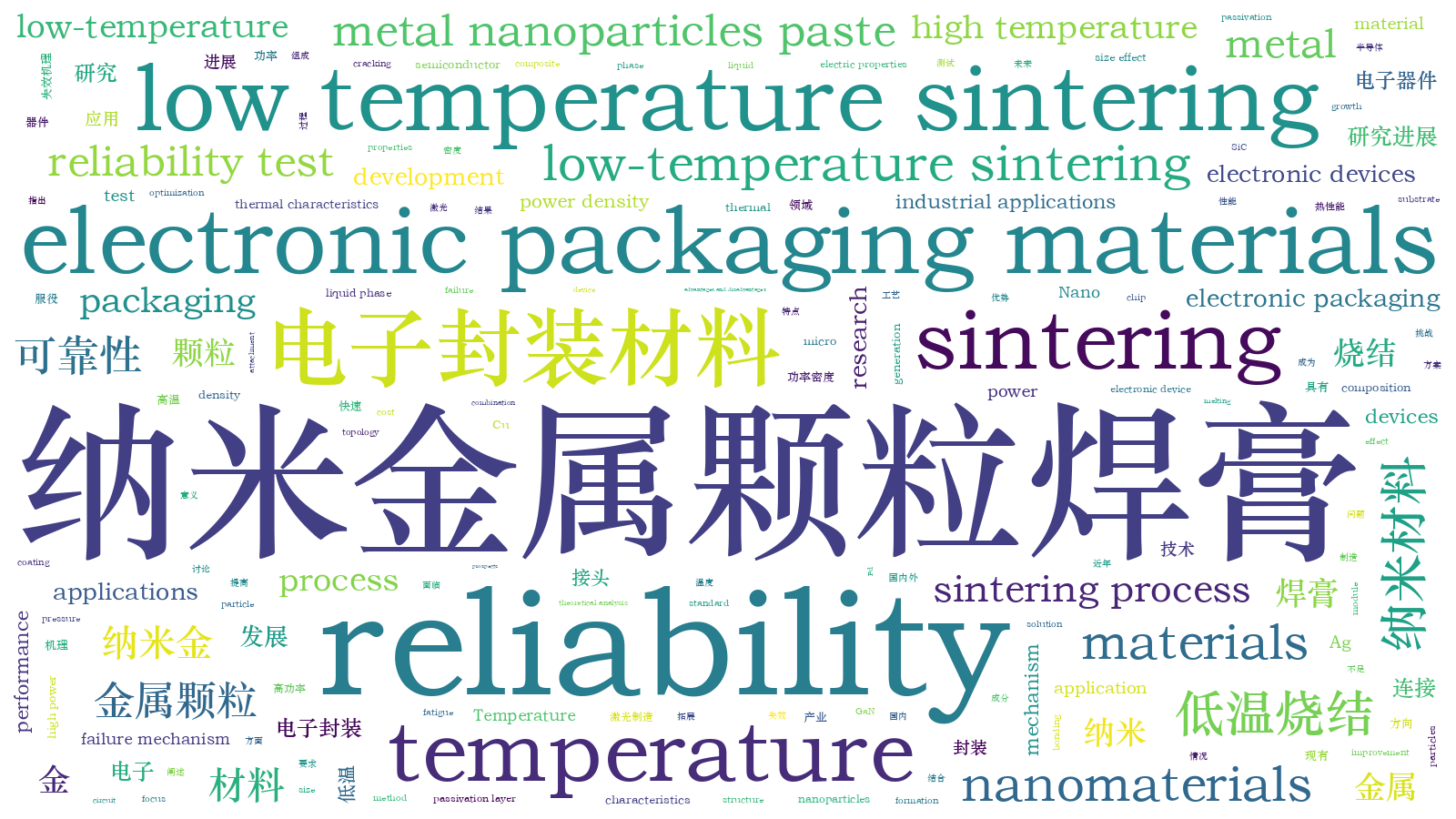纳米金属颗粒焊膏低温烧结连接及其接头可靠性研究进展  下载: 2390次
下载: 2390次
Significance With the rapid development of electronic industry, new problems and challenges in electronic packaging appeared. Sustained improvement of power density and expansion of application fields express a requirement for electronic devices that should have higher operating temperatures. The development of the third-generation semiconductor technology represented by SiC and GaN provides a feasible solution for high-temperature applications. Correspondingly, the traditional electronic packaging technology exposes many problems under high-temperature conditions, such as material fusing and fatigue cracking. It would seriously affect the high-temperature reliability of electronic devices. Thus, it is paramount to investigate the packaging technology to realize better reliability for high-temperature applications.
The die-attachment between the chip and substrate is an essential process for electronic packaging technology. The reliability of the joint not only determines the topology structure of the internal circuit of the packaging, but also directly relates to the electrical and thermal characteristics of the module. Traditional connection materials and technologies, such as solder and transient liquid phase bonding, cannot meet the packaging requirements of electronic devices under high-temperature conditions, so it is urgent to explore and develop new interconnection technologies for high-temperature operation.
Metal nanoparticles (NPs) paste sintering with excellent thermal/electric properties and “low-temperature sintering and high-temperature operation” characteristics has become a relevant development direction of interconnection technologies. The sintering mechanism of metal NPs is the size effect of metal NPs, which could reduce the temperature required for interconnection. The operation temperature of the interconnection layer after sintering can approach the melting point of the bulk material. Since the 1980s, metal NP pastes have been used in electronic packaging as interconnection materials. To investigate the problems of NP paste sintering technology in practical applications, the joint reliability of nanometal particles after sintering has become a research hotspot.
Progress This article presented the sintering mechanism, composition, and process of NP paste-sintering technology of NP pastes recently. The advantages and disadvantages of the existing research were discussed. The sintering process of metal NP pastes is generally in the early stage, and the main process to accomplish interconnection is the formation and growth of the sintering neck (
In addition, with the reliability test and results of the joint after sintering, this paper indicated the failure mechanism of existing research in high temperature and high power applications, and the development direction of metal NP paste-sintering technology in the future. Regarding joint reliability, according to internationally accepted standard of reliability tests, researchers have investigated and analyzed the sintering joint reliability with different processes and materials of NP pastes. Compared with the traditional assembly interconnection materials, the reliability of the metal NP paste after low-temperature sintering has significantly been improved (
Conclusions and Prospect Metal NP pastes provide an opportunity to develop electronic devices with higher power density. It has great prospects in the rapid development of the third-generation semiconductor industry at home. Recently, domestic researchs groups have made some achievements in the field of metal NP pastes, but there is still a certain gap, compared with overseas, especially the leading company in the industry. Therefore, based on further analysis of the studies, we should focus on promoting producer-university-researcher combination and seek suitable materials and processes for metal NP pastes in industrial applications and development, integrally considering the connection performance, process and material cost, high-temperature reliability, and other factors.
任辉, 张宏强, 王文淦, 贾强, 彭鹏, 邹贵生. 纳米金属颗粒焊膏低温烧结连接及其接头可靠性研究进展[J]. 中国激光, 2021, 48(8): 0802011. Hui Ren, Hongqiang Zhang, Wengan Wang, Qiang Jia, Peng Peng, Guisheng Zou. Low-Temperature Sintering and Joint Reliability of Metal Nano-Particle Paste[J]. Chinese Journal of Lasers, 2021, 48(8): 0802011.







